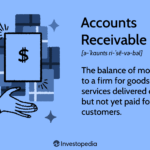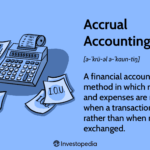What Is Absolute Advantage?
Absolute advantage is the ability of an individual, company, region, or country to produce a greater quantity of a good or service with the same quantity of inputs per unit of time, or to produce the same quantity of a good or service per unit of time using a lesser quantity of inputs, than its competitors.
Absolute advantage can be accomplished by creating the good or service at a lower absolute cost per unit using a smaller number of inputs, or by a more efficient process.
Key Takeaways
- Absolute advantage is when a producer can provide a good or service in greater quantity for the same cost, or the same quantity at a lower cost, than its competitors.
- A concept developed by Adam Smith, absolute advantage can be the basis for large gains from trade between producers of different goods with different absolute advantages.
- By specialization, division of labor, and trade, producers with different absolute advantages can always gain more than producing and consuming in isolation.
- Absolute advantage can be contrasted with comparative advantage, which is the ability to produce goods and services at a lower opportunity cost.
Basic Concept Of Absolute Advantage
Understanding Absolute Advantage
The concept of absolute advantage was developed by 18th-century economist Adam Smith in his book The Wealth of Nations to show how countries can gain from trade by specializing in producing and exporting the goods that they can produce more efficiently than other countries. Countries with an absolute advantage can decide to specialize in producing and selling a specific good or service and use the generated funds to purchase goods and services from other countries.
Smith argued that specializing in the products that they each have an absolute advantage in and then trading the products can make all countries better off, as long as they each have at least one product for which they hold an absolute advantage over other nations.
Absolute advantage explains why it makes sense for individuals, businesses, and countries to trade with each other. Since each has advantages in producing certain goods and services, both entities can benefit from the exchange.
This mutual gain from trade forms the basis of Smith’s argument that specialization, the division of labor, and subsequent trade lead to an overall increase in prosperity from which all can benefit. This, Smith believed, was the root source of the eponymous “Wealth of Nations.”
Absolute Advantage vs. Comparative Advantage
Absolute advantage can be contrasted with comparative advantage, which is when a producer has a lower opportunity cost to produce a good or service than another producer. An opportunity cost is the potential benefits an individual, investor, or business misses out on when choosing one alternative over another.
Absolute advantage leads to unambiguous gains from specialization and trade only in cases where each producer has an absolute advantage in producing some good. If a producer lacks any absolute advantage, then Adam Smith’s argument would not necessarily apply.
However, the producer and its trading partners might still be able to realize gains from trade if they can specialize based on their respective comparative advantages instead. In his book On the Principles of Political Economy and Taxation, David Ricardo argued that even if a country has an absolute advantage over trading many kinds of goods, it can still benefit by trading with other countries if that have different comparative advantages.
Assumptions of the Theory of Absolute Advantage
Both Smith’s theory of absolute advantage, and Ricardo’s theory of comparative advantage, rely on certain assumptions and simplifications in order to explain the benefits of trade.
Barriers to Trade
Both theories assume that there are no barriers to trade. They do not account for any costs of shipping or additional tariffs that a country might raise on another’s imported goods. In the real world, though, shipping costs impact how likely both the importer and exporter are to engage in trade. Countries can also leverage tariffs to create advantages for themselves or disadvantages for competitors.
Factors of Production
Both theories also assume that the factors of production are immobile. In these models, workers and businesses do not relocate in search of better opportunities. This assumption was realistic in the 1700s.
In modern trade, however, globalization has now made it easy for companies to move their factories abroad. It has also increased the rate of immigration, which impacts a country’s available workforce. In some industries, businesses will work with governments to create immigration opportunities for workers that are essential to their business operations.
Consistency and Scale
More crucially, these theories both assume that a country’s absolute advantage is constant and scales equally. In other words, it assumes that producing a small number of goods has the same per-unit cost as a larger number and that countries are unable to change their absolute advantages.
In reality, countries often make strategic investments to create greater advantages in certain industries. Absolute advantage can also change for reasons other than investment. Natural disasters, for example, can destroy farmland, factories, and other factors of production.
Pros and Cons of Absolute Advantage
One advantage of the theory of absolute advantage is its simplicity: The theory provides an elegant explanation of the benefits of trade, showing how countries can benefit by focusing on their absolute advantages.
However, the theory of comparative advantage does not fully explain why nations benefit from trade. This explanation would later fall to Ricardo’s theory of comparative advantage: Even if one country has an absolute advantage in both types of goods, it will still be better off through trade. In other words, if one country can produce all goods more cheaply than its trading partners, it will still benefit by trading with other countries.
Also, as explained earlier, the theory also assumes that absolute advantages are static—a country cannot change its absolute advantages, and they do not become more efficient with scale. Actual experience has shown this to be untrue: Many countries have successfully created an absolute advantage by investing in strategic industries.
In fact, the theory has been used to justify exploitative economic policies in the postcolonial era. Reasoning that all countries should focus on their advantages, major bodies like the World Bank and IMF have often pressured developing countries to focus on agricultural exports, rather than industrialization. As a result, many of these countries remain at a low level of economic development.
Pros and Cons of Theory of Absolute Advantage
Cons
-
Lacks the explanatory power of the theory of comparative advantage.
-
Does not account for costs or barriers to trade.
-
Has been used to justify exploitative policies.
Example of Absolute Advantage
Consider two hypothetical countries, Atlantica and Pacifica, with equivalent populations and resource endowments, with each producing two products: guns and bacon. Each year, Atlantica can produce either 12 tubs of butter or six slabs of bacon, while Pacifica can produce either six tubs of butter or 12 slabs of bacon.
Each country needs a minimum of four tubs of butter and four slabs of bacon to survive. In a state of autarky, producing solely on their own for their own needs, Atlantica can spend one-third of the year making butter and two-thirds of the year making bacon, for a total of four tubs of butter and four slabs of bacon.
Pacifica can spend one-third of the year making bacon and two-thirds making butter to produce the same: four tubs of butter and four slabs of bacon. This leaves each country at the brink of survival, with barely enough butter and bacon to go around. However, note that Atlantica has an absolute advantage in producing butter and Pacifica has an absolute advantage in producing bacon.
If each country were to specialize in their absolute advantage, Atlantica could make 12 tubs of butter and no bacon in a year, while Pacifica makes no butter and 12 slabs of bacon. By specializing, the two countries divide the tasks of their labor between them.
If they then trade six tubs of butter for six slabs of bacon, each country would then have six of each. Both countries would now be better off than before, because each would have six tubs of butter and six slabs of bacon, as opposed to four of each good which they could produce on their own.
How Can Absolute Advantage Benefit a Nation?
The concept of absolute advantage was developed by Adam Smith in The Wealth of Nations to show how countries can gain by specializing in producing and exporting the goods that they produce more efficiently than other countries, and by importing goods that other countries produce more efficiently. Specializing in and trading products that they have an absolute advantage in can benefit both countries as long as they each have at least one product for which they hold an absolute advantage over the other.
How Does Absolute Advantage Differ From Comparative Advantage?
Absolute advantage is the ability of an entity to produce a product or service at a lower absolute cost per unit using a smaller number of inputs or a more efficient process than another entity producing the same good or service. Comparative advantage refers to the ability to produce goods and services at a lower opportunity cost, not necessarily at a greater volume or quality.
What Are Examples of Nations With an Absolute Advantage?
A clear example of a nation with an absolute advantage is Saudi Arabia, a country with abundant oil supplies that provide it with an absolute advantage over other nations.
Other examples include Colombia and its climate—ideally suited to growing coffee—and Zambia, possessing some of the world’s richest copper mines. For Saudi Arabia to try and grow coffee and Colombia to drill for oil would be an extremely costly and, likely, unproductive undertaking.
The Bottom Line
The theory of absolute advantage represents Adam Smith’s explanation of why countries benefit from trade, by exporting goods where they have an absolute advantage and importing other goods. While the theory is an elegant and simple illustration of the benefits of trade, it did not fully explain the benefits of international trade. That would later fall to David Ricardo’s theory of comparative advantages.



